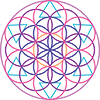Rift Sawn Hardwoods
Rift Sawn / Quarter Sawn
There are many ways to saw the bark of a tree and each shows the grain of the wood differently.
One cut is regular or plain saw. This method involves cutting the bark, either horizontally or vertically, from one side of the bark to the other side. Here you’ll see large, irregular circles or semi-circles and many different colors as the tree rings are featured prominently.

A popular choice among our customers is quarter sawn wood. The bark is divided into four sections, and the carpenter cuts the bark diagonally, from one end of the bark to the other end of the divided section. This cut produces a stable piece of wood that is less susceptible to shrinkage and warping. The grain lines of this cut show the curve of the tree rings.
Rift sawn wood is a level up from the quarter sawn wood. The bark is also divided into four sections, but it is cut radially, from the edge of the bark to the center. This method produces the most stable cut of wood and the grain lines that are shown are similar to the lines in the quarter sawn wood.
One of the most popular woods we use for the quarter and rift sawn furniture is oak. Its rays have an aesthetic appeal unmatched by other woods. We use white oak for our quarter sawn furniture. It is sturdier than red oak, the species of oak we use for our plain sawn furniture. Its tree rings also show more contrast, revealing beautiful colors when it is squarter or rift sawn.
The visual effect of rift and quarter sawn oak isn’t the only reason why it is more expensive than plain sawn oak. These cutting methods require more wood to make the same piece of furniture than the regular sawing technique.
Each cut has advantages and disadvantages and it is up to you to decide which is best. Do not worry about the waste because nothing is really wasted. Our craftsmen use the remaining wood as fuel, and they even use sawdust as bedding for their chickens.
Distressed Finish:
Distressed wood finish is a finishing process that emulates the look of antique furniture. It shows two or more layers of wood finish (in different colors) with the outer layer slightly worn away. This creates a unique look of a piece with history that has been finished and refinished previously.
Distressing has become an art form, and a way to decorate furniture and other items in a popular and stylish way. It is usually meant to give an item an old and rustic, one-of-a-kind look.
When you distress a piece of wood, you are deliberately making it look older. This might mean that you destroy or manipulate the current finishing on the object, in order to make it look less than perfect. This can be done with many materials and techniques from with sandpaper, to paint stripper. Distressed finishes can reveal anything from peeks at full wood grain to mostly pigmented wood texture to thick or crackled paint or shellac.
Other techniques include hammering wood in order to make it softer, or give a dimpled appearance. It can even be bleached, stained, or pickled. Another technique includes watering down regular paint, so that it appears to be faded and thinner than it would new. This allows other layers of paint, or the wood itself, to show through the paint layer. Another distressing technique calls for the pain or varnish to be layered on using sponges, which will create an uneven pattern. When an area is painted, the corners and edges are often painted lighter, or sanded down, so that the item appears to be worn.
Antiquing is a very specific type of distressing for wood furniture meant to make a piece look older than it is, but not necessarily worn out or refurbished. Parts of the finish are oftensoftened or removed to make the entire thing piece look like it has been worn over the years. The artisan often applies historically accurate paint colors, and puts on an antique-like faux finish. Crackle varnishes may be used to simulate aging shellacs and paints. Sometimes, in order to complete the antiquing method of distressing, the artisan applies accents details that were only found in that particular time period, like certain styles knobs on dresser drawers, or other details Sometimes, glazes are used to blend colors into the crevices as if they had sunk in over time. A truly effective antiquing process can take a long time and a great deal of work to get the details just right.
Distressing can also add the effects of mother nature into a piece of furniture. For instance, distressing often includes putting in fake woodworm holes.
